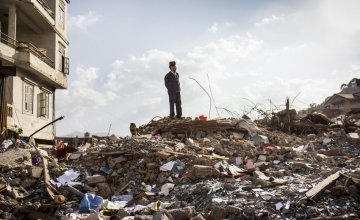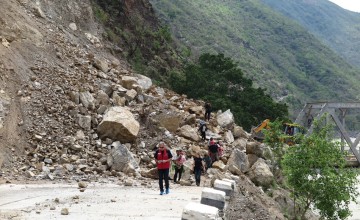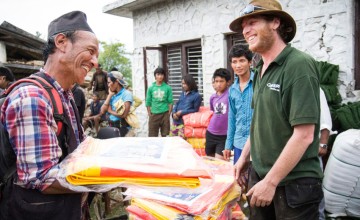
Read our 2024 annual report

Knowledge Hub
Nepal Earthquake: from predictions to preparations

As the death toll in Nepal continues to rise, and with millions affected by the earthquakes, Simon Starling asks what we need to do to be better prepared for recurrent disasters.
The Nepal earthquake is an unimaginable tragedy, but it is not unexpected. It was known that an earthquake was likely to strike in the country – just not exactly when or where. It was known that those who would suffer most would be living in difficult to reach rural communities, and those poorer people in towns living in less structurally sound houses. It should have been expected that Kathmandu Airport would struggle to cope with the international relief effort – just as Port au Prince Airport did following the Haiti earthquake in January 2010.
Despite the fact all this was known, why has the impact been so devastating? What could have been done to limit the damage?
Why so much devastation?
In earthquake zones, the greatest danger is from buildings collapsing, landslides and avalanches. Building away from steep slopes and building ‘earthquake-proofed’ houses helps. However Nepal is a poor country with poor infrastructure. Many buildings are low quality, building codes have not been enforced, and people do not have the financial resources to live wherever they want or build stronger houses.
So, as is often the case, this disaster hit the poorest and most marginalised (in both geographic and political terms) hardest.
What can be done?
Based on Concern’s work from Haiti and other parts of the world, some key lessons can be drawn about preparing for and responding to disasters.
Build communities’ resilience
Local communities are the first to respond to disasters. They know the terrain and environment intimately and know best how to mitigate the risks they face. Yet they are also those most affected. Therefore development efforts must focus on building these communities’ resilience – their ability to respond to, cope with, and recover from shocks and stresses. Communities must be fully involved in disaster preparedness planning processes and structures.

Support local structures, in the local context
Just as in Haiti, a disaster of this scale is impossible to respond to through airlifts alone. Nepal has just one international airport, which itself was damaged in the earthquake and subsequent aftershocks. The reality is that most aid will have to be driven in, rather than flown. The mountainous topography of Nepal makes this a huge challenge. In many areas there are no roads, and, many existing roads have been destroyed.
In other mountainous areas where Concern works around the world, we have improved roads and pre-position emergency stocks in preparation for disasters. This involves teams trekking (sometimes for days) into roadless villages, and storing emergency supplies in strategic locations. However, with a crisis of Nepal’s scale, no realistic amount of pre-positioning would have been sufficient. And though this speeds up emergency response, it is not a long term solution.
In the longer term it is crucial to support local and national government structures to build their capacity to prepare for, and respond to predicted and unpredicted hazards. Concern has been working with local NGOs and local governments around the world to establish, organise, train, and fund critical disaster management committees at local, district, and national levels.
Coordinate the international relief effort
People will see the rubble. They will not see the complex decision-making between the government, local authorities, planners, the UN, NGOs and local communities about how to recover and rebuild. Coordination and communication among all aid actors is critical to effectively deliver humanitarian relief and in beginning the recovery and rebuilding.

Address infrastructure, inequality and political marginalisation
One of the challenges for Nepal will be ‘building back better’ – improving infrastructure and constructing disaster proof buildings. This will be expensive, and will require international donors’ support. But it’s a good investment, and much cheaper than responding to disasters. The United Nations Development Programme estimates that every €1 spent in prevention saves €7 in disaster response.
Also important, but more intangible, is addressing the inequality and political marginalisation that make some people more vulnerable to hazards than others. NGOs and others need to work to empower the poorest and most marginalised to advocate on their own behalf.
Prioritise and fund resilience building
More, and more predictable and sustained, funding for resilience building and disaster risk reduction will be needed from the international community to help Nepal and its people recover now, and prepare for and respond to the inevitable risks they continue to face.

How long before we prioritise resilience?
Whilst the kind of measures described above cannot prevent an earthquake occurring, they can help reduce the impact, and prevent the damage caused by ensuing secondary disasters like hunger or disease. But the question remains: how many more disasters like Haiti, the Philippines, and Nepal must we see before proper emphasis, and money, is put into building communities’ resilience and disaster preparedness?
You can help
The Irish public has already donated over one million euro to the Nepal Earthquake appeal. But we still need your help. Please donate today.


